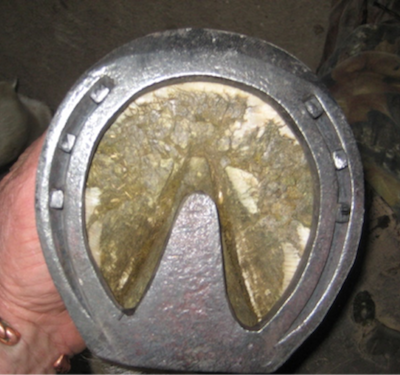

Collecting as much information about a horse before shoeing it is critical for any farrier. One area that influences how a farrier approaches the shoeing is where the horse lives.
“When you know a horse is going to be living in a nice place with good, wooden or plastic fences, you might use a different shoe, or at least fit it differently than you would when you know a horse is going to be living in a place with a lot of mud and maybe older wire fences that are down on the ground where a horse might paw at them,” says Leighton, Iowa, farrier Jeff Ridley.
Ridley has seen well-made and applied Z-bar shoes that do not accomplish what the farrier intended because of a failure to consider where the horse was living.
“I see a Z-bar used for an injury, such as a hoof avulsion or a quarter crack,” he says. “The Z-bar is placed so that the injured area is floated to allow it to grow down. I’m fine with that, but the only time that shoe works is when the horse is standing on a clean, hard surface. As soon as you put the horse in a stall with shavings or into a paddock or an arena where the surface is a deformable material, the foot sinks down into it. You now have direct pressure on the most compromised area of the foot that you were supposed to be protecting.
“A heart bar shoe in this case would be a much better choice as it offers the same benefits as a Z-bar, but also offers protection of the most compromised areas of the foot.”
For more tips on shoe selection, read “Matching The Shoe To The Job” in the May/June 2017 issue of American Farriers Journal.








Post a comment
Report Abusive Comment